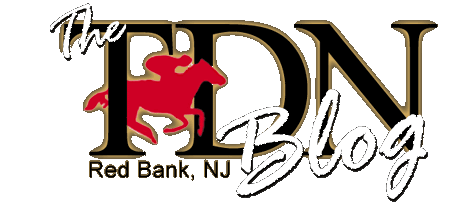 For several years, I have been observing a certain advantage for American pedigree in European races, specifically France and England. I know enough empirically but not being an expert in pedigree, my reasoning may be flawed.
For several years, I have been observing a certain advantage for American pedigree in European races, specifically France and England. I know enough empirically but not being an expert in pedigree, my reasoning may be flawed. The method is simple. American-bred horses should be expected to have more speed breeding than the Euros, so as 2-year-olds, they can win early in sprints against their Euro-bred rivals.
When I first began testing the hypothesis, with real money, I limited the plays to American breds with obvious sprint pedigree. But I began noticing that even horses that I perceived as bred to route were still winning more than their fair share of sprints against the Euros, as first- or second-time starters. I could often find a longshot payoff at the smaller tracks. I limit the plays to when the trainer has a good statistic with 2-year-old horses, such as Ralph Beckett in England, or simply by seeing that the horse is getting late betting action.
Here’s a recent example worth looking at:
Chantilly, June 13, Race 3: 5 ½ furlongs:
The 6-horse, Her Star, was the only American bred in a field of 10. The sire was Harlan’s Holiday, and I remembered him as a route stakes winner and Derby contender. The trainer of Her Star is Pascal Bary (who won the BC Mile with Domedriver). I knew that Bary does well with 2-year olds, but the trainer advantage was neutralized by the fact that other “designer trainers” had horses in the same race: André Fabre (trainer of surprise BC Classic winner Arcangues), for example, and Freddie Head, of Goldikova and Miesque fame.
The pedigree of several other starters seemed to be formidable (Dansili, for example).
So in fact, the only differentiating factor was the USA pedigree of Her Star. However, there was a question of distance. Her Star’s full-sister, Silver Reunion, was a route horse, having raced only four times, all at a mile and an eighth. Her stakes win came in a Grade III race at Tampa, just after she turned three, and then her racing career vanished from the face of the earth.
Looks like I had a first-time starter in a short sprint whose immediate family liked long distances. Harlan’s Holiday’s average winning distance was 9.3 furlongs. What to do? Digging for more information, though, I discovered that Harlan’s Holiday had indeed won two sprints as a 2-year-old, one of them at 5.5 furlongs.
The USA-bred Her Star raced forwardly, alternately challenged and was even passed for a few moments from left and right by several other runners. But in the end, she dug in and prevailed. The odds were only 2.3 to 1, but if you were a believer in American pedigree in Euro sprints, that was generous enough.
In TDN discussions I’ve seen many comments suggesting that American pedigree is in decline because unfit horses are in the pool, horses that have raced with Lasix or Bute and therefore might be passing on masked weaknesses to the next generation. Meanwhile, the past performances of Euro horses can be trusted as legitimately representing their class level, since doping is absolutely banned. So I wonder, if this is true, am I witnessing a renaissance of American pedigree or a last hurrah?
As you can tell, I am not a connoisseur of pedigree, but I do know that American bred horses in Euro sprints offer an advantage to the horseplayer. The question is, where will horses like Her Star be a year or two from now?
Mark Cramer is the author of the crime novel Tropical Downs and the bicycle racing chronical Handicapping on the Road. He lives in Paris.

No comments:
Post a Comment